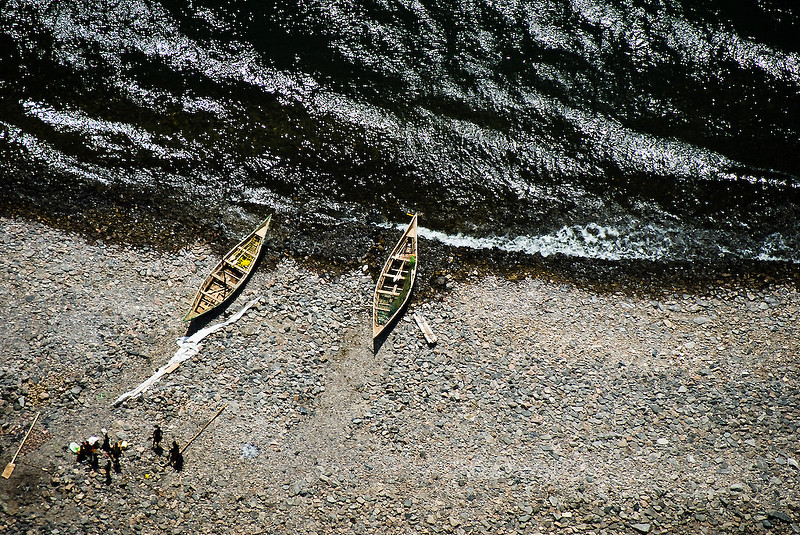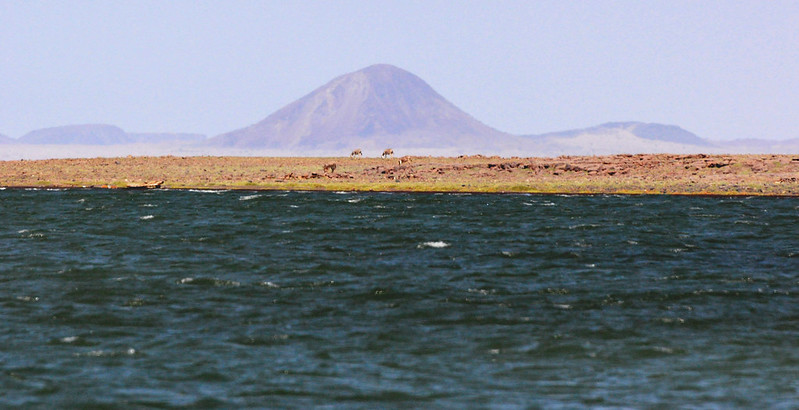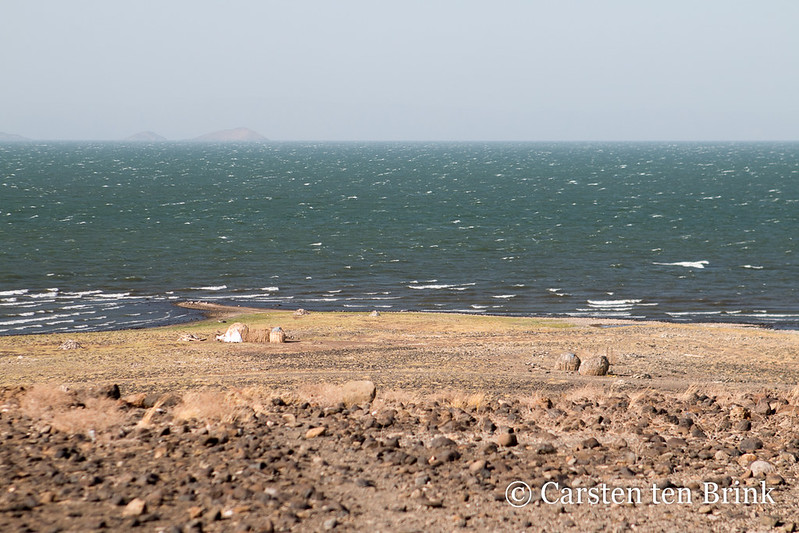Lake Turkana, or as it is also called Lake Rudolf, is an amazing closed drainage body of the Great Rift Valley in the eastern part of the African continent. Standing on its shore, you will be sure that you are on the sea coast. The sandy beach and waves are eye-catching. Fierce winds are blowing, and fishing boats sway nearby.
 |
| Lake Turkana |
The lake is filled with turquoise water, so the locals call it the "Jade Sea." Still, this is not a sea but a large lake. It was known to the natives for a long time, and they called it "Basso Narok" ("black lake"). Turkana is the world's largest non-drying desert lake. In addition, it is the largest alkaline lake on the planet, covering an area of about 6,500 sq. km and by volume it is the world's fourth-largest salt lake. The water from the lake can be drunk, but it is not very pleasant to the taste - it is affected by the increased salinity.
First Image / Source
Where is Lake Turkana
 |
| Turkana Lake |
Image / Source
The lake is located in the northern part of the Rift Valley, on the border of Ethiopia and Kenya. But in fact, more than 95% of the reservoir lies in northern Kenya and only a small part in Ethiopia. The lake is fed by three rivers: Omo, Turkvel, and Kerio. The most significant contribution to the filling of the lake is made by the Omo River (over 90%), which originates in Ethiopia.
 |
| Lake Turkana Kenya |
Image / Source
Lake Turkana in numbers
Lake Turkana stretched from north to south is 250 kilometers long and up to 44 kilometers wide. According to scientists, between four and eight thousand years ago, the lake stretched for more than 400 kilometers. During this period, a river flowed out of it, which then flowed into the Nile. Now it is a completely closed lake.
Naturally, the locals have long known about the lake (it is hard not to notice it). But the Europeans only became aware of it in 1888. Then the traveler from Hungary Samuel Teleki and his Austrian friend Ludwig von Hönel discovered this huge lake and named it Rudolf in honor of the Prince of Austria.
Researcher John Walter Gregory reports in an 1894 Geography Journal that the lake is called Basso Narok, meaning Black Lake in the language of the local Samburu tribe. This tribe was one of the dominant in the region.
The lake retained its European name Rudolph during the British colonization of eastern Africa. After Kenya became independent, in 1975, President Mze Jomo Kenyatta issued a decree naming the lake the name Turkana in honor of the powerful tribe living in its vicinity.
 |
| Lake Rudolf |
Image / Source
Lake Turkana nature
The lake is famous for the largest population of Nile crocodiles and hippos on the planet. There are about 14,000 crocodiles alone. Moreover, there are specimens more than 5 meters long. Scorpions and carpet vipers live on rocky shores.
 |
| Lake Rudolf Africa |
Image / Source
Hundreds of bird species live in these places. Add to this the hundreds of other migratory bird species that periodically appear here.
 |
| East Turkana |
Compared to other large African lakes, Turkana has relatively few fish species; the lake is inhabited by about 50 species, including 12 endemics.
The abundance of plankton is food for both birds and fish.
The lake also has a large population of large aquatic turtles, especially in the Central Island area.
 |
| Lake Turkana |
Image / Source
 |
| Turkana Lake |
Image / Source
Lake Turkana islands
There are several islands of volcanic origin on the lake. We will consider the three main and largest ones (the rest are rather modest in size).
North island
Located in the northern part of the lake. Its dimensions are approximately 1.5 by 2 kilometers.
 |
| North island Lake Turkana |
Image / Source
Central (or crocodile) island
Central Island lies approximately in the center of the reservoir. Its dimensions are 2.5 by 2.8 km. It is often called Crocodile island. This name is not accidental. Crocodiles abundantly inhabit this islet. In addition to them, there is a special population of large turtles.
 |
| Central (or crocodile) island Lake Turkana |
South Island
In the southern part of the lake, you guessed it, there is South Island. It is the largest island in the water area (size 11 by 5.1 km). And the youngest. There is still increased volcanic activity here. The island's territory is under protection and is a National Park "South Island National Park."
 |
| South Island . Or, as the locals call it - Envaitenet - an island where people disappear. |
Image / Source
Interesting Facts
- In terms of water volume, Lake Turkana ranks 4th among salt lakes in the world, and 24th among all lakes on the planet.
- Teleki volcano rises on the southern coast of the lake Teleki volcano.
- The reservoir and its National Parks are UNESCO World Heritage Sites
 |
| The lake Teleki volcano |
Image / Source
Lake Turkana | Video
 |
| The lake Teleki volcano |
Image / Source
Archaeological finds
Millions of years ago, a more humid climate prevailed here. The area of the lake was much larger, and its coast was more fertile. Large animals lived here, including elephants, giraffes, hippos, wild boars, and antelopes.
A large number of important archaeological finds have been made in the area of the lake. The most famous and significant discoveries include the find of Richard Leakey.
In 1972, he discovered the skull of the oldest human ancestor, Homo habilis. Its age is estimated in the range from 1.4 to 2 million years.
In 1984, the same researcher found a well-preserved skeleton of the so-called Turkan boy. It belongs to Homo erectus or Homo ergaster, and the age of the find is about 1.6 million years.
In 1994, the remains of more than 20 individuals were discovered, presumably of the species Australopithecus Anamica. In the course of analyzes, it was found that their age is from 3.9 to 4.2 million years.
In addition, on the western coast of the lake, archaeologists have discovered the most ancient stone tools, about 3.3 million years old. They are as much as 700,000 years older than the tools found in Ethiopia.
Threat to Lake Turkana
Now the ecosystem of the reservoir is threatened by an ecological disaster. Ethiopia plans to build the Gibe 3 Dam in the upper reaches of the Omo River. If the project ends, the lake may begin to dry up. The fate of the Aral Sea may await him. Today, more than a quarter of a million local residents live in the vicinity of the lake, belonging to about a dozen tribes. The overwhelming majority of them are closely connected with the lake and practically depend on it. It promotes the development of agriculture, animal husbandry, and fishing. People can lose all this if the dam is built.
Source — Ru.Wkipedia | Wikipedia


No comments:
Post a Comment